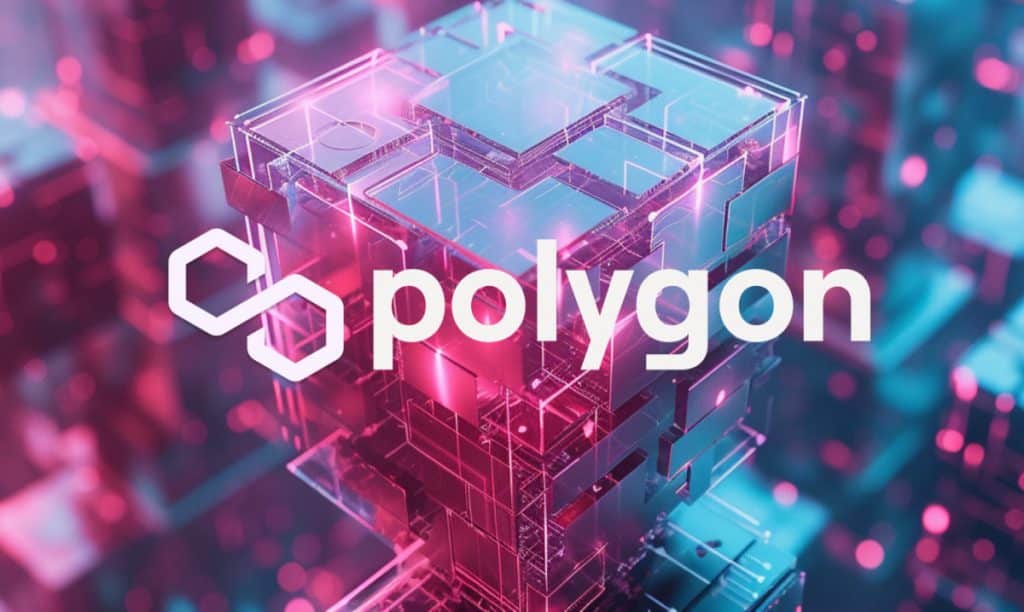Polygon to Launch AggLayer Mainnet on February 23 for Blockchain Connectivity Using ZK Proofs


In Brief
Polygon Labs announced the launch of AggLayer mainnet set for Feb 23, to ease connectivity between blockchains by utilizing ZK Proofs.

Polygon Labs has announced the forthcoming release of a pioneering solution known as the Aggregation Layer, or AggLayer, designed to facilitate connectivity between blockchains utilizing zero-knowledge proofs.
Scheduled for release on February 23, 2024 – the initial iteration of this solution aims to empower developers by enabling them to forge connections between blockchains, thereby fostering unified liquidity within the digital ecosystem.
The primary objective of the Aggregation Layer is to establish a standard level of security across diverse blockchain architectures, encompassing both modular and monolithic chains, with a particular focus on those operating within the Polygon ecosystem.
“Mark your calendars for the Aggregation Day virtual event. Dive into the tech behind the AggLayer, discover what you can achieve with it, and understand the importance of aggregation while learning what comes next. AggLayer v1 Mainnet is going live,” said Polygon on platform X.
Moreover, Polygon said that it will soon reveal further details regarding the announcement in the coming days.
In the current landscape of blockchain technology, there exists a notable disparity from the seamless and interconnected nature of the Internet. Rather than experiencing a unified and highly scalable network, users encounter challenges such as scaling limitations and suboptimal user experiences (UX) due to fragmented liquidity and differing states across various blockchain platforms.
This issue is exacerbated by the continuous launch of new blockchain chains, reminiscent of the pre-Internet era characterized by isolated and incompatible systems. There is a pressing need for improvement in this regard.
AggLayer and ZK Proofs to Harmonize Web3 Ecosystem
Addressing these challenges, researchers and engineers at Polygon Labs have developed the aggregation layer. This approach aims to harmonize the entire Web3 ecosystem. Similar to the transformative impact of TCP/IP in seamlessly connecting disparate networks to form the Internet, the aggregation layer, also referred to as AggLayer, seeks to integrate a diverse array of ZK-secured L1 and L2 chains into a cohesive network that operates akin to a singular chain. The AggLayer functions as a decentralized protocol with two primary objectives:
- Aggregating ZK proofs from all interconnected chains.
- Ensuring the safety of near-instant atomic cross-chain transactions.
The advantages of the AggLayer within the context of Polygon 2.0 are manifold. By leveraging ZK proofs, it facilitates the creation of a seamlessly integrated environment that mimics a single chain, despite the sovereignty of each individual chain within the ecosystem. This integration brings about several key benefits:
- Facilitation of near instantaneous and atomic transactions, enhancing overall transactional efficiency.
- Unification of liquidity across the ecosystem, promoting capital efficiency.
- Significant improvement in UX, creating an experience reminiscent of the Internet’s interconnectedness.
For chains connected to the AggLayer, there is the dual benefit of maintaining full sovereignty while simultaneously accessing a substantial pool of unified liquidity, simplifying the process of liquidity bootstrapping. Moreover, for dApp developers, AggLayer offers the opportunity to reach users collectively, regardless of the specific blockchain they are on. Such cross-chain transactions foster genuine growth and enable access to users within the aggregated network.
For end users, the implementation of the AggLayer translates into a UX that closely mirrors the interconnected nature of the Internet. They can navigate within a unified environment without the inconvenience of frequent and cumbersome bridging processes.
Disclaimer
In line with the Trust Project guidelines, please note that the information provided on this page is not intended to be and should not be interpreted as legal, tax, investment, financial, or any other form of advice. It is important to only invest what you can afford to lose and to seek independent financial advice if you have any doubts. For further information, we suggest referring to the terms and conditions as well as the help and support pages provided by the issuer or advertiser. MetaversePost is committed to accurate, unbiased reporting, but market conditions are subject to change without notice.About The Author
Kumar is an experienced Tech Journalist with a specialization in the dynamic intersections of AI/ML, marketing technology, and emerging fields such as crypto, blockchain, and NFTs. With over 3 years of experience in the industry, Kumar has established a proven track record in crafting compelling narratives, conducting insightful interviews, and delivering comprehensive insights. Kumar's expertise lies in producing high-impact content, including articles, reports, and research publications for prominent industry platforms. With a unique skill set that combines technical knowledge and storytelling, Kumar excels at communicating complex technological concepts to diverse audiences in a clear and engaging manner.
More articles

Kumar is an experienced Tech Journalist with a specialization in the dynamic intersections of AI/ML, marketing technology, and emerging fields such as crypto, blockchain, and NFTs. With over 3 years of experience in the industry, Kumar has established a proven track record in crafting compelling narratives, conducting insightful interviews, and delivering comprehensive insights. Kumar's expertise lies in producing high-impact content, including articles, reports, and research publications for prominent industry platforms. With a unique skill set that combines technical knowledge and storytelling, Kumar excels at communicating complex technological concepts to diverse audiences in a clear and engaging manner.





















































